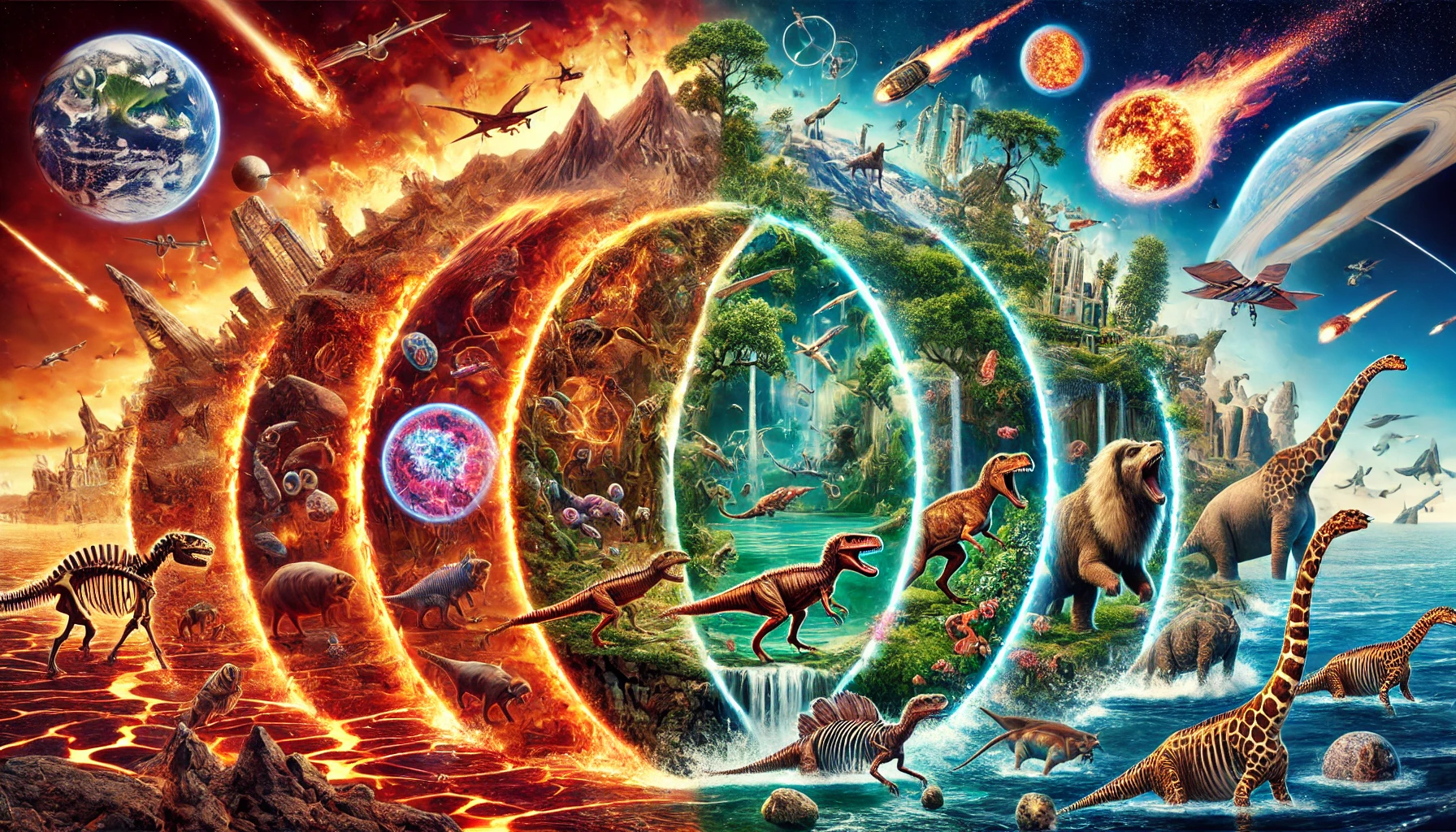The history of Earth is a fascinating tale of transformation, evolution, and resilience. Over billions of years, our planet has undergone dramatic changes, shaping the world as we know it today. From its fiery origins to the emergence of life, Earth’s story is a testament to the power of nature and time.
The Formation of Earth (4.6 Billion Years Ago)
Earth was formed approximately 4.6 billion years ago from a swirling cloud of gas and dust in the early solar system. Gravity pulled together these particles, creating a molten planet that was constantly bombarded by asteroids and comets. Over time, Earth cooled, forming a solid crust and a primitive atmosphere composed of gases like carbon dioxide, nitrogen, and water vapor.
The Hadean and Archean Eons: The Birth of Life (4.6 – 2.5 Billion Years Ago)
During the Hadean Eon, Earth was inhospitable, with extreme volcanic activity and a toxic atmosphere. However, as the planet stabilized, water accumulated, forming the first oceans. Around 3.8 billion years ago, in the Archean Eon, the first signs of life appeared in the form of simple, single-celled organisms known as prokaryotes. These microbes thrived in the ocean and began producing oxygen through photosynthesis, leading to the Great Oxygenation Event.
The Proterozoic Eon: The Rise of Complex Life (2.5 Billion – 541 Million Years Ago)
As oxygen levels increased, more complex organisms began to evolve. The Proterozoic Eon saw the emergence of eukaryotic cells—cells with a nucleus—which eventually led to multicellular life. This period also witnessed the formation of the first supercontinents and significant ice ages, shaping Earth’s geology and climate.
The Phanerozoic Eon: The Explosion of Life (541 Million Years Ago – Present)
This eon is divided into three major eras, each marked by significant evolutionary and geological changes:
1. The Paleozoic Era (541 – 252 Million Years Ago)
Often called the “Age of Invertebrates,” the Paleozoic Era began with the Cambrian Explosion, a period of rapid diversification of marine life. The first fish, insects, and land plants appeared, followed by the evolution of amphibians and reptiles. The era ended with the Permian Extinction, the most severe mass extinction in Earth’s history, wiping out nearly 90% of all species.
2. The Mesozoic Era (252 – 66 Million Years Ago)
Known as the “Age of Reptiles,” the Mesozoic Era was dominated by dinosaurs. This period saw the break-up of the supercontinent Pangaea and the rise of flowering plants. It ended with the Cretaceous-Paleogene extinction event, likely caused by an asteroid impact, leading to the demise of the dinosaurs and paving the way for mammals to thrive.
3. The Cenozoic Era (66 Million Years Ago – Present)
Following the extinction of the dinosaurs, mammals became the dominant life forms. The Cenozoic Era witnessed the evolution of primates, the formation of modern ecosystems, and significant climatic shifts, including the Ice Ages. Around 300,000 years ago, Homo sapiens, our species, emerged, shaping the world through culture, technology, and civilization.
Conclusion: A Dynamic and Ever-Changing Planet
Earth’s history is a story of constant change and adaptation. From its fiery beginnings to the thriving biodiversity of today, our planet has endured countless challenges and transformations. As we continue to explore and understand Earth’s past, we gain valuable insights into its future and our place in its grand timeline.



